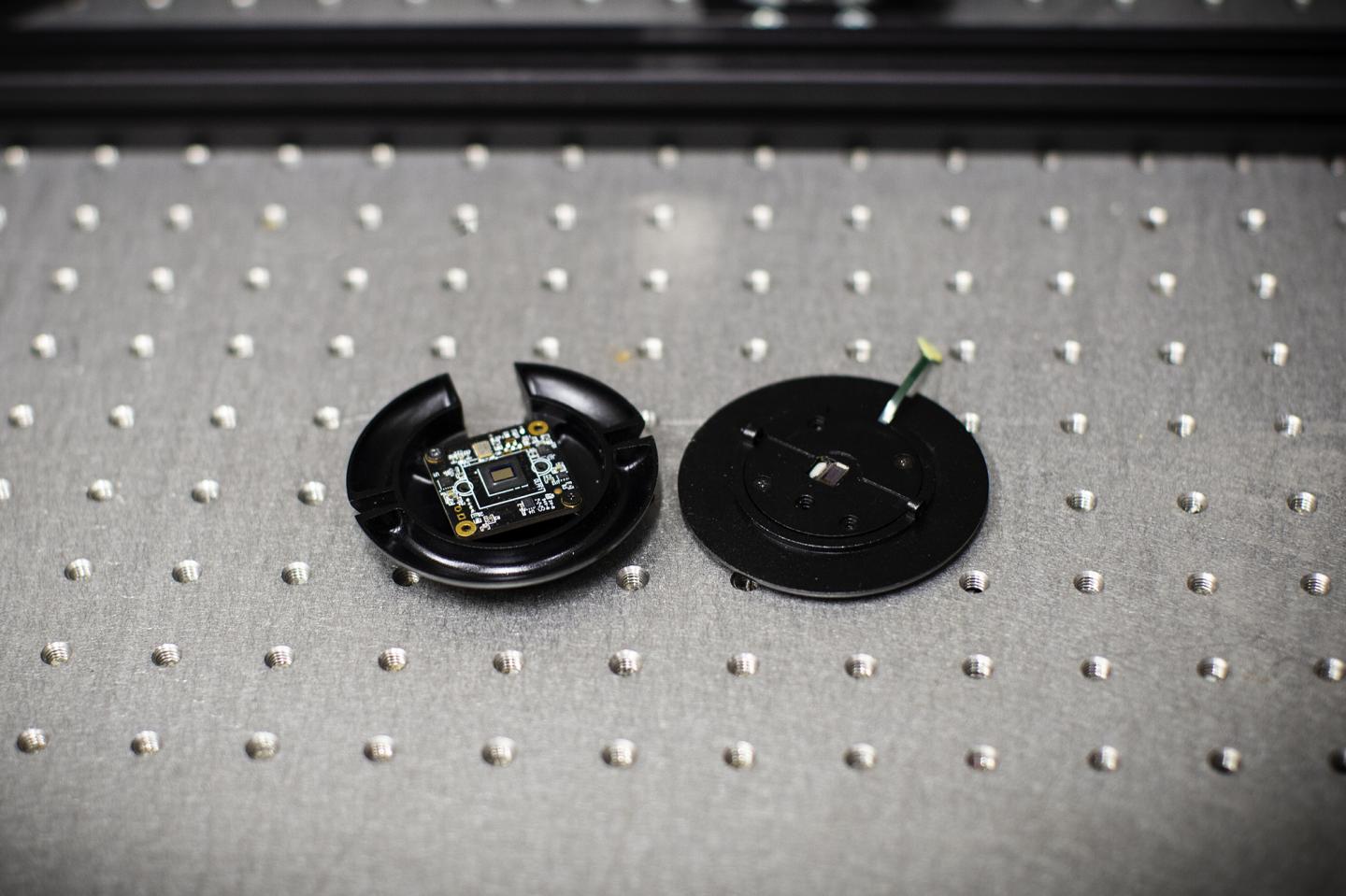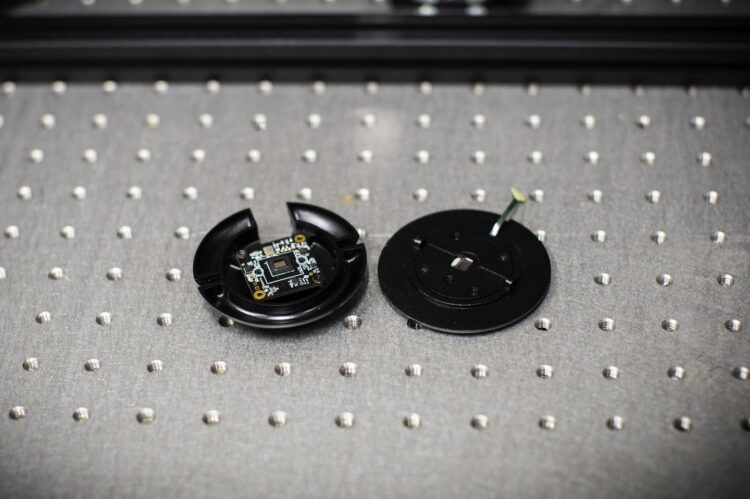
Credit: X. Fuentes/UB
An international team led by researchers of the University of Barcelona builds the smallest and cheapest high-resolution microscope to date. To build it, researchers developed new nanoLEDs that act as a lightning source and determine the resolution of the microscope without lenses. The team created a new start-up and started a new European project to bring this technology to the market.
As part of the European project ChipScope, researchers have created a new type of super-resolution optical chip-sized microscope. The microscope is based on 200 nm nanoLEDs and could allow the observation of some viruses and cellular processes in real time without the problems of current high-resolution techniques. The current prototype has been developed at a cost of nearly 1,500 euros, but it can reach a few tens of euros when produced at a large scale, since it is completely based on conventional microelectronic technologies.
ChipScope presented a new microscopy, different than the traditional one, in which the resolution depends on the size of the lightening source instead of the detection system. That is, instead of an only source of light -such as in conventional microscopes-, these used millions of light sources in miniature. “The technological challenge was to develop 200 nm nanoLEDs forming an array. The sequential and independent activation enables us to determine the position of the observed object and to follow it real-time”, notes the coordinator of the project, Ángel Diéguez, lecturer at the Department of Electronic and Biomedical Engineering and member of the Institute of Nanosciences and Nanotechnology of the University of Barcelona (IN2UB). This project proved that the new microscopy works and offers a resolution that depends on the size of the used LEDs.
The new microscope has been tested with different samples, among which are cellular images of idiopathic pulmonary fibrosis (IPF), a chronic lung pathology related to age which affects humans and causes half a million deaths per year.
The 4-year long project has been funded with 3.75 million euros within the European call Future and Emerging Technologies (FET Open). Apart from the University of Barcelona, other participants in this project are the Technical University of Braunschweig (Germany), University Rome Tor Vergata (Italy), the company Expert Ymaging (Barcelona), the Austrian Institute of Technology, the Medical University of Vienna, and the Swiss Foundation for Research in Microtechnology.
Exporting new technology to the market
As a continuation of ChipScope, the team of the Universit of Barcelona is leading a new project, titled SMILE, in which they “develop technology-based micro-lightening tools created in ChipScope. This is a step forward to bring this new technology to a broader market”, notes UB researcher Daniel Prades, coordinator of SMILE.
The objective is to develop an array of microLEDs (about 10 μm) to bring a higher lightening intensity and which can be added to standard optoelectronic instrumentation systems. This will achieve a scalable lighting platform in terms of number of pixels, intensity and speed, and more flexible than current solutions. In addition, when combined with color conversion systems, the new tool will be able to operate at different wavelengths and will be applicable beyond microscopy, such as in controls of chemical and biological reactions.
This will achieve a scalable lighting platform in terms of number of pixels, intensity, and speed and much more flexible than current solutions. In addition, in combination with color conversion systems, the new tool will be able to operate at different wavelengths and will have application beyond microscopy, such as in the control of chemical and biological reactions.
To adapt the development to the needs of the market, SMILE counts on the participation of a group of final users formed by multinationals, small companies and research centers from different branches that will be responsible for the final experimental tests in the fields of the manufacture of DNA chips, photolithography, optogenetics, high-performance fluorimetry, and holographic microscopy.
The new project has received a funding of nearly 2 million euros in two years from the EIC Transition to Innovation call of the European FET-Proactive program (FETPROACT-EIC-06-2019), which is awarded to promising technologies. As a result of these developments, the QubeDot GmbH start-up has been created, based in Braunschweig (Germany), and its mission is to market the technology of nanoLED arrays.
ChipScope project: http://www.
###
Media Contact
Bibiana Bonmatí
[email protected]
Original Source
https:/





